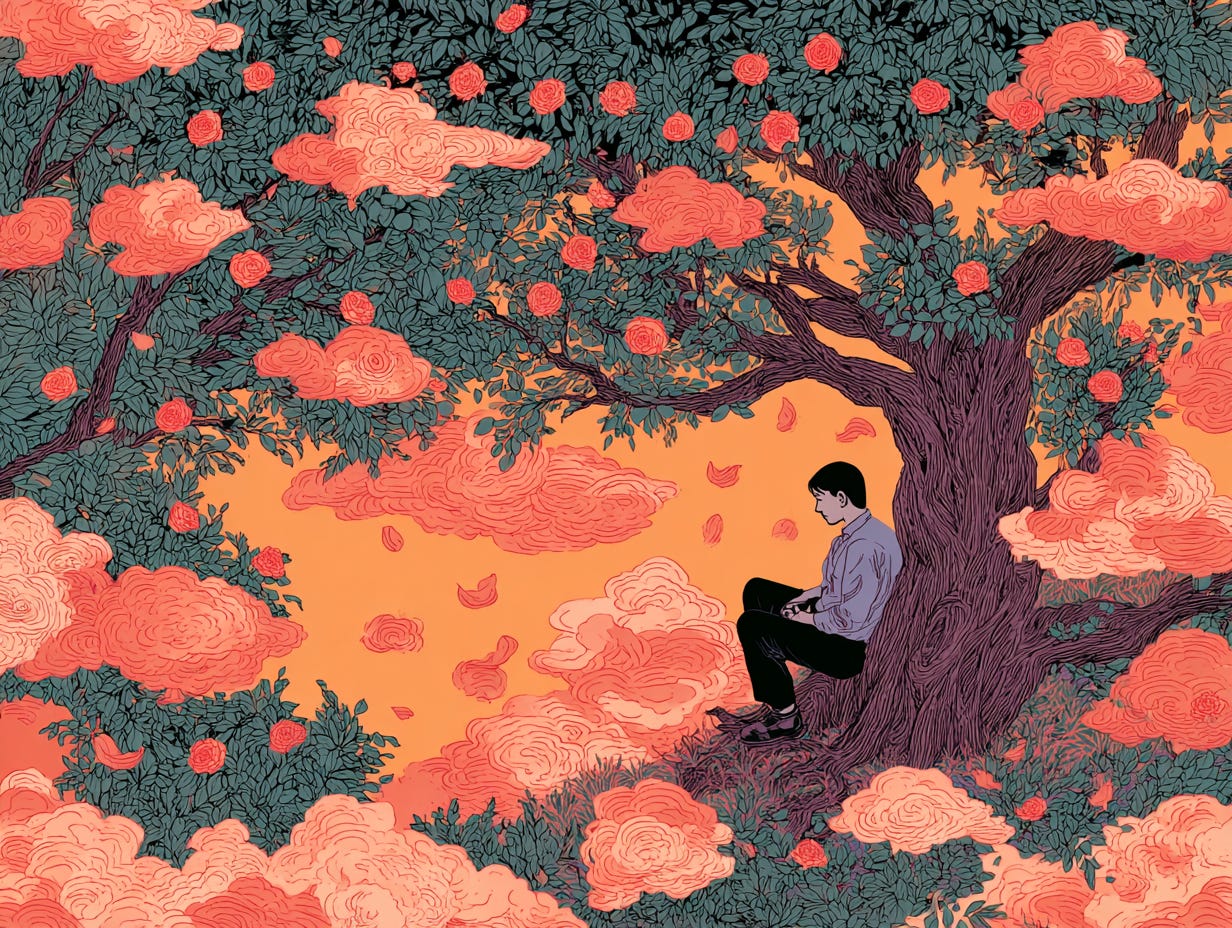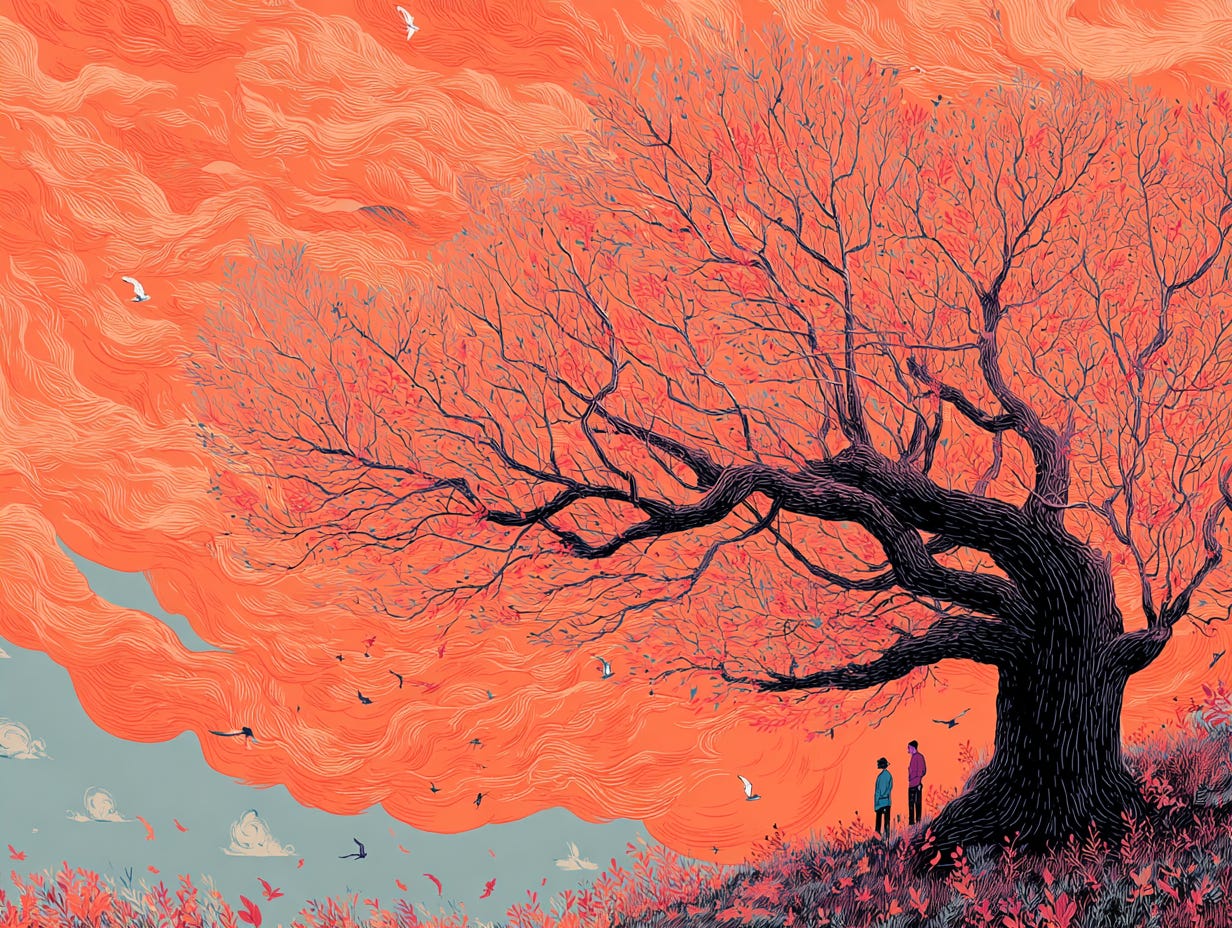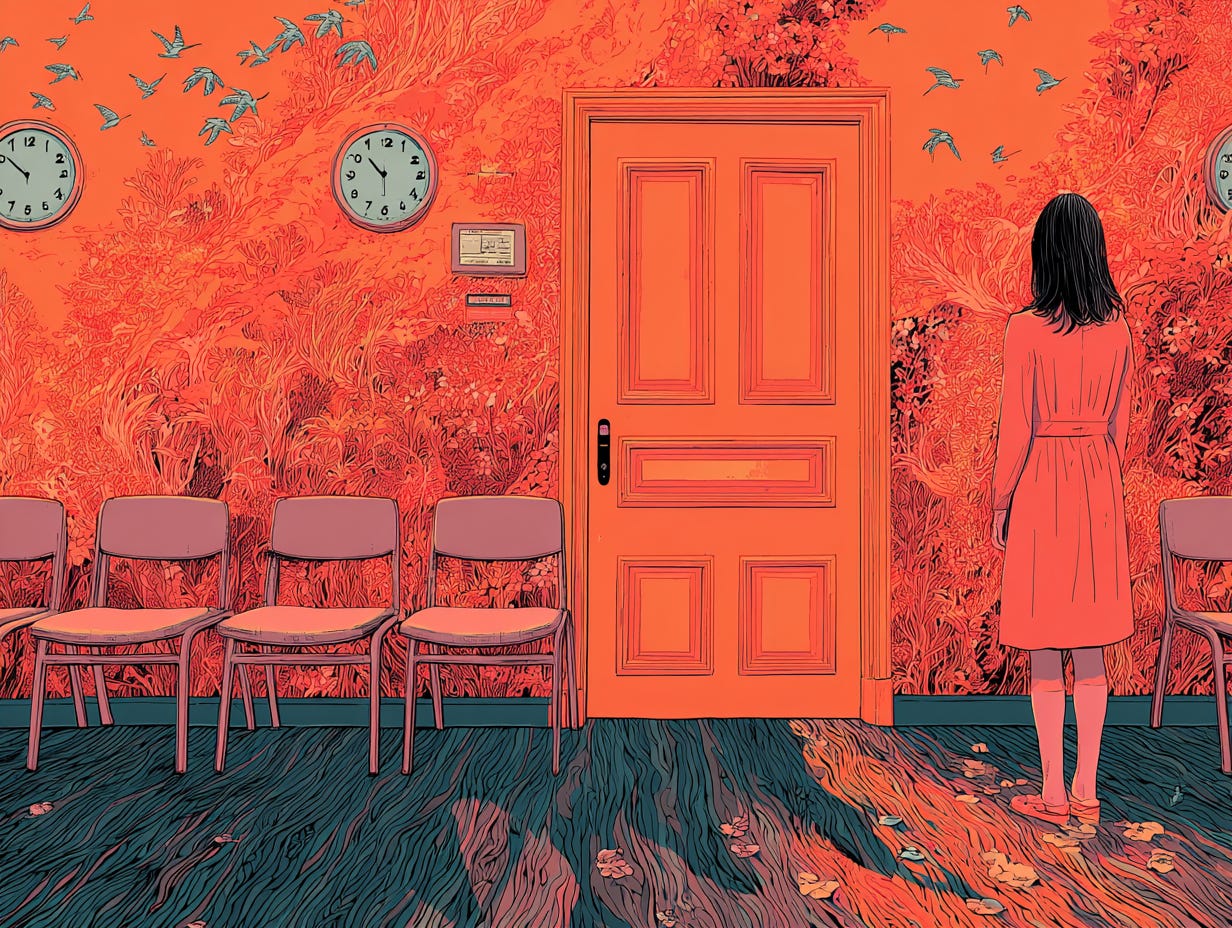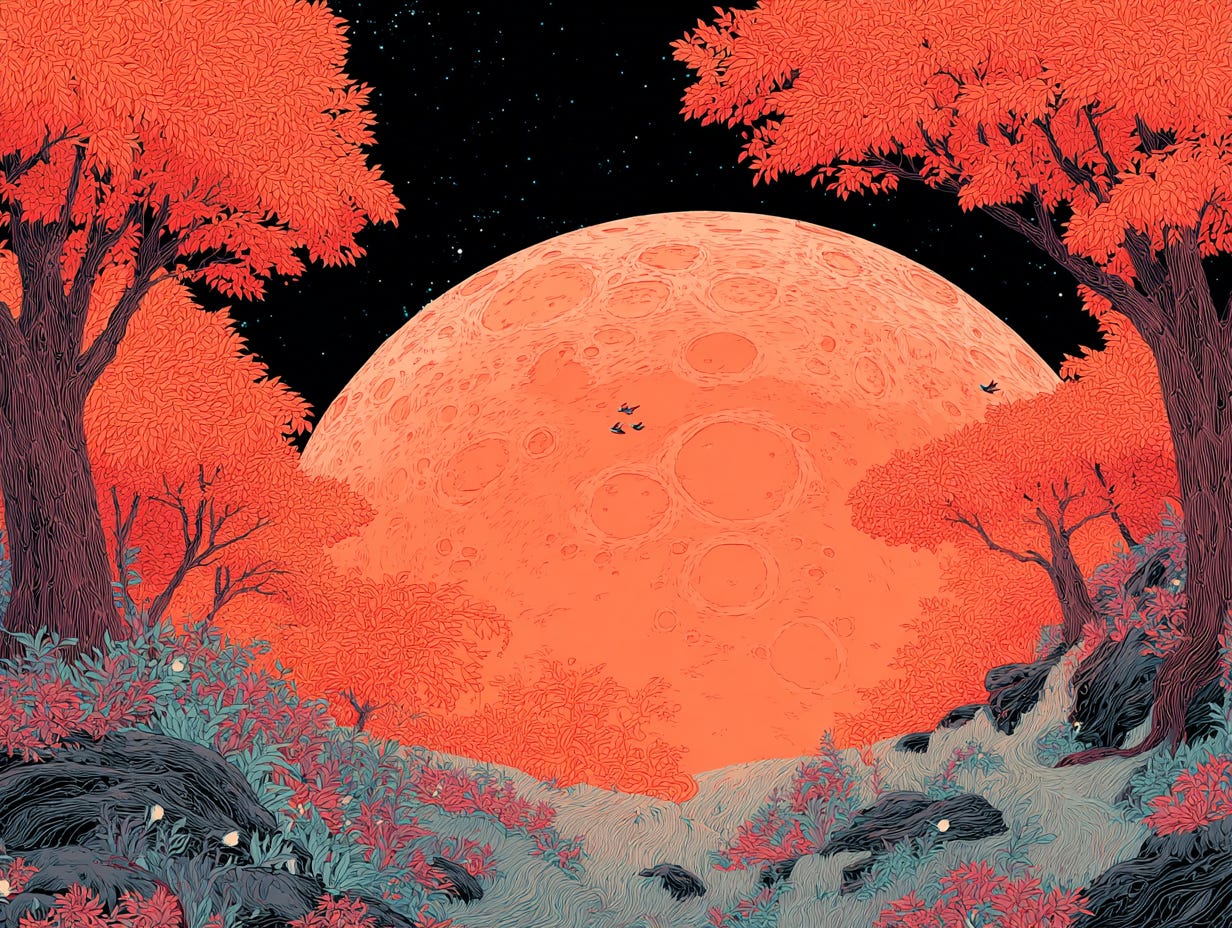On Finding Grounding in Movement
A meditation on presence, compassion, and the paradox of stillness
In the meditation tradition I've been practicing, there's a phrase that surfaces during certain guided sessions: being on the edge of experience. The words arrive like a gentle hand on the shoulder, neither pushing nor pulling, simply acknowledging where we already are. I've been sitting with this notion, or perhaps it's been sitting with me, watching how it transforms the texture of ordinary moments into something more immediate, more alive.
The edge of experience.
What does it mean to inhabit this liminal space?
In Buddhist psychology, as contemporary teachers will tell you, it's the knife's edge between awareness and absorption, between the witness and the witnessed. It's not about transcending our human messiness but about meeting it with such exquisite intimacy that the boundaries begin to shimmer and dissolve. When we apprehend any aspect of our experience with presence, we find that experience to be fleeting. This fleetingness isn't a flaw in the design; it's the design itself.
I've been trying to write for days now, but the words resist their usual channels. The well feels dry, the bucket scrapes against stone. And yet, here I am, honoring a commitment to lower the bucket anyway, to see what sediment might cloud the empty water. There's something to be said for this practice of showing up to the blank page even when, especially when, inspiration has packed its bags and left no forwarding address. The Zen teacher Natalie Goldberg calls this "writing practice," but really it's life practice: the art of continuing when continuation feels impossible.
What wants to emerge, what keeps knocking at the door of consciousness, is an understanding about compassion that feels both revolutionary and embarrassingly simple. Self-compassion, I'm discovering, isn't the consolation prize for those who can't manage to love others properly. It's the cornerstone, the load-bearing wall of the whole structure. Without it, our attempts at connection become performances, elaborate choreographies designed to hide the fact that we're dancing alone in an empty room.
How does self-compassion work its peculiar magic?
Picture it as a kind of softening, a releasing of the white-knuckled grip we maintain on our own experience. When the mind softens, the heart follows suit, or perhaps it's the other way around. The order matters less than the opening itself. In this spaciousness, we discover room for others not as objects to be managed or impressed or kept at bay, but as fellow travelers navigating their own edges, their own emptinesses and fullnesses.
The phrase that keeps returning: It's that simple self-compassion that's like a warm, hugging embrace. But simple doesn't mean easy. As any meditator knows, the simplest instructions contain within them a lifetime of practice. When we practice meditation with awareness, one of the first things we notice is how un-aware we are. The humility of this recognition becomes its own teaching.
As tensions heighten in our collective moment (and when haven't they?), the question of grounding becomes urgent. Not grounding as escape, but grounding as a way of staying present to what is, even when what is feels unbearable. There's a paradox here that the meditation traditions understand: true grounding comes not from digging in our heels but from allowing ourselves to move with what moves through us.
The tree that survives the storm is the one that knows how to bend.
I'm learning that staying still deepens the well. Not the stillness of stagnation, but the dynamic stillness of attention. When we allow our routines to become sticky (that morning sit, that evening walk, that pause before responding to the difficult email), we create containers for presence. These containers hold us when we cannot hold ourselves.
The Buddhist teacher Carol Wilson speaks of cultivating a quality of gentle, compassionate yet intimate attention that can be fully present with whatever experience arises. This is the practice: not changing our experience, not perfecting it, but changing our relationship to it.
The freedom we seek isn't found in some imagined future where all our edges have been smoothed away. It's here, in this moment, in the very texture of our resistance and longing.
There's a kind of intelligence that emerges from this way of being, a wisdom that bypasses our usual strategic planning. There's visioning, there's embodying. There isn't planning. The body knows things the mind hasn't yet learned to language. When we drop below the level of mental chatter (what Buddhists call the "monkey mind"), we find a different kind of knowing. I don't know until I know.
This isn't indecision; it's patience ripening into clarity.
Sometimes what's needed isn't a yes but a boundary. It's not a yes, just yet. In a culture that valorizes immediate response, instant availability, there's something radical about claiming the right to pause, to feel into the fuller dimensions of a request or opportunity before responding. This, too, is compassion: toward ourselves and toward those who would receive our half-hearted, rushed compliance as a kind of violence.
Honoring the waiting time.
In the space between stimulus and response, between invitation and acceptance, lives our freedom. Viktor Frankl knew this. The meditation traditions know this. And on good days, when the practice is working through me rather than being worked by me, I know it too. The waiting isn't empty (well, it is, but that’s for another essay); it's pregnant with possibility, rich with the potential for a response that comes from centeredness rather than reactivity.
The edge of experience reveals itself as the place where we're neither falling into future fantasies nor tumbling backward into past ruminations. There is a regular and recurring invitation to bring our attention back to the present moment and relate to what is right in front of us. It's the tightrope walker's balance point, requiring both relaxation and alertness. Too much of either, and we fall.
What strikes me now, as the words finally begin to flow after days of drought, is how the practice of allowing (allowing the dry spells, allowing the resistance, allowing the not-knowing) creates its own kind of moisture. The well refills not through force but through patience. The same principle applies to our emotional lives: when we stop trying to manufacture the "right" feelings and simply allow what's here to be here, something shifts.
There's a figure in my internal landscape I've come to recognize: the reactive saboteur, the one who pushes away what's difficult, who would rather exit than engage. She's scared. She's tired. She just doesn't want to. And here's where the real practice begins: not in vanquishing this part of ourselves but in allowing it to rest. What transforms resistance is not force but presence, meeting even our reluctance with curiosity rather than judgment.
When we extend this non-judgmental awareness even to our resistance, something miraculous happens: the resistance begins to relax its grip. Not always, not immediately, but often enough to trust the process. This is self-compassion in action, not a greeting card sentiment but a rigorous practice of meeting ourselves exactly where we are.
The meditation cushion becomes a laboratory for this experiment in allowing. Each sit offers fresh data: here's impatience arising, here's the desire to be anywhere but here, here's the moment when the mind finally settles like sediment in still water. There's a wide array of Buddhist meditation techniques, all of which help develop awareness, insight (vipassana) and tranquility (shamatha). But the techniques are just fingers pointing at the moon. The moon itself is this capacity we all have to be present with our own experience without adding or subtracting anything.
And so we return, again and again, to the edge. Not because it's comfortable (it rarely is) but because it's real. It's where life actually happens, in the margin between what was and what might be. Here, in this slender moment, we find not only our own experience but our connection to everyone who has ever struggled to stay present, to remain kind, to choose love over fear.
The collective grip pulsates around us: anxiety about the future, grief for what's being lost, anger at what seems unchangeable. But even in the midst of this shared tension, the practice offers a different possibility. Each moment of genuine presence, each gesture of self-compassion, sends ripples outward. We don't practice in isolation; we practice as part of a larger organism, learning to breathe more deeply, to hold more gently, to release more fully.
The well is no longer empty. It never was. We just needed to learn a different way of drawing water: gently, patiently, with the kind of attention that transforms even emptiness into abundance.
Emergence with Rachel Weissman is a weekly exploration of the interconnections between consciousness, technology, and planetary flourishing.
If you find this writing valuable, leave a heart ❤️, share it with a friend, and consider subscribing if you haven’t already.





